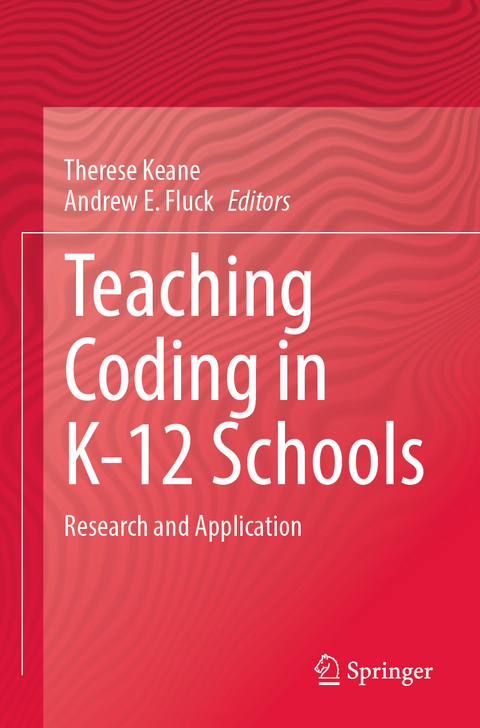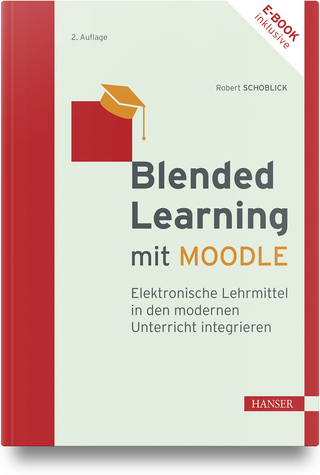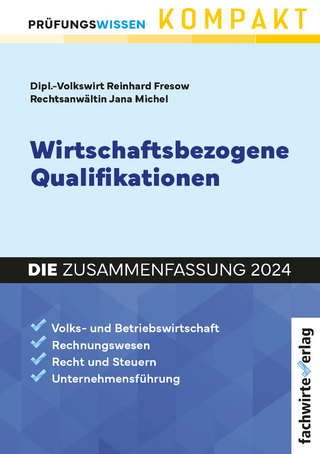
Teaching Coding in K-12 Schools
Springer International Publishing (Verlag)
978-3-031-21972-6 (ISBN)
This book contains highly effective ways to teach coding and computational thinking skills throughout primary and secondary schooling. It outlines a research informed path for students from birth to 18 years, identifying key skills and learning activities. Based on global perspectives and research at each stage, it outlines how these findings can be applied in the classroom.
Teaching coding to students in K-12 has been a skillset that has been debated across educational jurisdictions globally for some time. The book provides examples of schools that are teaching coding to students in engaging and relevant ways, delivering well thought out compulsory curriculums. Additionally, it provides examples of schools where coding is not mandated in the curriculum and is taught in an ad-hoc manner. Through the full discussion of all of these varied examples, the book presents both sides of the serious and ongoing debate in the field as to whether coding should be taught in an explicitway at all. The increasing school of thought that teaching coding is a skill that is already obsolete, and the focus should be on computational thinking is completely examined and presented. In this book, both sides of the argument, as well as the specific, meticulous research underlying each side, are given equal weight. The debate is a serious one and requires a clearly defined thematic response with evidence on all sides of the argument presented rationally. This book does just that. Created by carefully selected authors from around the world, it will be a highly studied research reference.
For over 25 years Professor Therese Keane has been a stalwart for empowering girls in STEM. Her passion and many achievements have been acknowledged by her peers in her receiving numerous national and state awards. Therese is a Professor of STEM Education at La Trobe University. She has worked in a variety of school settings where she has taught IT and lead in K-12 education as the Director of ICT. She is the current Vice Chair of the Working Group 3.3 (Research into Educational Applications of Information Technologies) for the International Federation of Information Processing (IFIP)/UNESCO.
Associate Professor Andrew Fluck has taught science, mathematics and computing in Nigeria, England and Australia. He teaches and researches the transformational potential of computers in education, such as, the use of computers to teach integral calculus and quantum mechanics in primary schools. He is the previous Chair of Working Group 3.3 (research into educational applications of information technologies) for IFIP/UNESCO. Andrew is an avid longbow archer, continental archery judge and Director for Archery Australia.1. Introduction - The need for programming and computational thinking from Early Childhood Education through to Secondary schooling..- Section One. Early childhood education .- 2. Children (aged 3-5) learning mathematics through programming, thinking and doing, or just doing?.- 3. Teaching Coding in Kindergarten: Supporting Students' Activity with Robot Coding Toys.- 4. Programming environments for the development of computational thinking in preschool education: a systematic literature review.- Section Two. Elementary/Primary school .- 5. Developing Computational Fluency via Multimedia Stories.- 6. Scaffolding engagement with educational technologies to develop computational thinking in Year 1 girls.- 7. Enhancing Computational Thinking through App Design in Primary Schools.- 8. Program, learn and play: a course of extracurricular activities in Scratch programming for students in grades 3-6.- 9. Integrating programming in other subjects at primary level - tool, glue or ideation.- 10. Introducing Programming Concepts through the Bebras Tasks in the Primary Education.- 11. Supporting primary students with disabilities and neurological differences in developing digital thinking skills through an inclusive game making club.- 12. Game Making and Coding Fluency in a Pri-mary Computing Context.- Section Three. Secondary/High school .- 13. The problem with programming: An overview..- 14. Expanding teacher capacity and student engagement in digital literacies in the primary classroom: an informal explorative reflection.- 15. Why and how to teach physical computing: Research and practice in computer science education at secondary schools.- 16. Coding Across the Curriculum: Challenges for non-specialist teachers.- 17. Teaching High School Students Artificial Intelligence by Programming Chatbots.- 18. Teaching Coding and Computational Thinking with Model Train Robotics: Social Factors That Motivate Students to Learn Programming.- 19. Initial steps in teaching Python at lower secondary school using the platform Codeboard.io.- 20. Creating Mobile Applications with App Inventor Adopting Computational Action .- 21. Learning Computational Thinking in Second-ary School (Year 8) in Germany in International Comparison - Results from ICILS 2018.- 22. Computational Thinking in pre-vocational education: A focus on coding unplugged .- 23. A Case of Girls Building Robots or Robots Building the Girls?.- 24. Applying hybrid programming in high schools: An empirical study analyzing teachers' opinions.- 25. Hybrid VR programming - Extending the Notional Machine for C++.- 26. Cognitive Influences on Learning Programming.- 27. Where next for coding in schools?.-
"This volume, of interest to educators and teacher educators, provides wonderful examples of how coding, programming and computational thinking can be taught as well as recommendations for tools to be used in the process. ... More importantly, it can be used as a conversation starter ... in general. It should be noted that all chapters in this volume went through a double-blind process to ensure the quality of the content." (Deborah Gochenaur, MAA Reviews, September 4, 2023)
“This volume, of interest to educators and teacher educators, provides wonderful examples of how coding, programming and computational thinking can be taught as well as recommendations for tools to be used in the process. … More importantly, it can be used as a conversation starter … in general. It should be noted that all chapters in this volume went through a double-blind process to ensure the quality of the content.” (Deborah Gochenaur, MAA Reviews, September 4, 2023)
| Erscheinungsdatum | 06.03.2024 |
|---|---|
| Zusatzinfo | XXIII, 413 p. 60 illus., 40 illus. in color. |
| Verlagsort | Cham |
| Sprache | englisch |
| Maße | 155 x 235 mm |
| Themenwelt | Schulbuch / Wörterbuch ► Unterrichtsvorbereitung ► Unterrichts-Handreichungen |
| Sozialwissenschaften ► Pädagogik ► Schulpädagogik / Grundschule | |
| Schlagworte | Computational thinking in K-12 education • Computer Science Education • ICT and education • Research into computational thinking • teaching coding • Teaching Digital Technologies |
| ISBN-10 | 3-031-21972-4 / 3031219724 |
| ISBN-13 | 978-3-031-21972-6 / 9783031219726 |
| Zustand | Neuware |
| Informationen gemäß Produktsicherheitsverordnung (GPSR) | |
| Haben Sie eine Frage zum Produkt? |
aus dem Bereich


